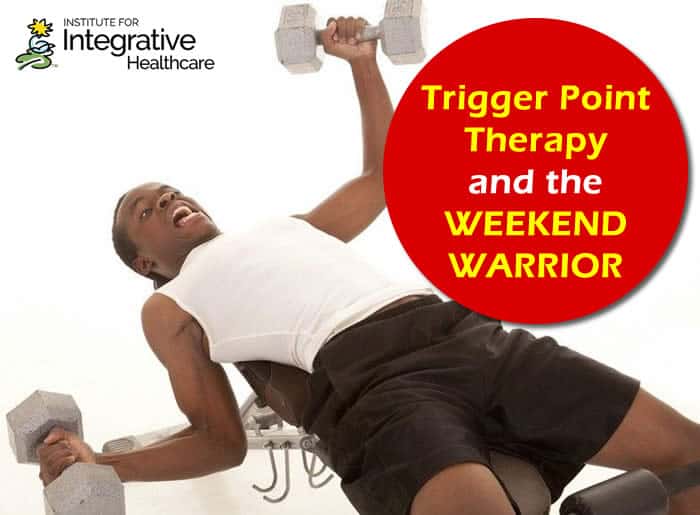

Many people have trouble fitting the recommended 30 minutes of physical activity into each day and try to make up for their inactivity during the week with long bouts of exercise on the weekends. These people are known as weekend warriors, a group who is sedentary Monday through Friday, then goes crazy on the weekends trying to cram it all in. Kruger et al (2007) tells us that “approximately 1-3% of U.S. adults are classified as weekend warriors by two national surveys and about 81% of weekend warriors participated in household and transportation activities, while 65% participated in sports or exercise.” The term weekend warrior refers not only to the sports enthusiast, but also to the home repair and improvement project enthusiast. Both of these types of activity involve overuse of muscle tissue for extended periods of time, specifically in those who are not prepared for this level of activity.
Common Injuries
The weekend warrior strategy is “most popular with those aged 45-64, an age group that often experiences time constraints from having to care for children as well as parents, in addition to large occupational time demands.”1 Common injuries resulting from the weekend warrior strategy can include “cervical herniated discs, impingement/rotator cuff tears of the shoulder, and low back pain, ACL and meniscal tears of the knee, muscle strains/tendinitis, and ankle sprains.” Even more common is acute trigger point activation.
Activation of trigger points in the overused, overworked muscles can cause both local and referred pain. According to Alverez and Rockwell (2002), “trigger points are discrete, focal, hyperirritable spots located in a taut band of skeletal muscle.” According to Braun and Simonson (2008) a trigger point is “usually activated by acute or repetitive overuse and is a localized area of hypertonicity that occurs at the motor end unit, which is the neuromuscular junction.” An important difference between a tender point and a trigger point is that of referred pain. Trigger points cause pain at rest and refer pain in a pattern similar to the patient’s pain complaint.3 In other words, the active trigger point is very often not located within the area of referred pain.
Massage Therapy and Trigger Points
Trigger points can feel like a “nodule or localized area of hypertonicity amid a taut band of tissue.”4 It can be a bit tricky to find and release a trigger point. Massage therapists must be familiar with trigger point pain pattern mapping, as trigger points do not often exist within their pain patterns. It is often helpful to have a trigger point map in the massage office both for the therapist to consult and for clients to use in identifying their pain patterns.
Massage therapists can treat trigger points with sustained, direct pressure on the nodule, holding for 30 to 45 seconds while the tissues release. When first pressing a trigger point, it is often so intense that very little pressure is needed to reach the client’s tolerance. After the point has an initial release, the therapist can often add a bit more pressure to encourage a deeper release of the muscle tissue. This can be followed by stretching the muscle tissue to lengthen the fibers and relax the muscle. Heat can also be applied to assist in relaxing the muscle tissue and increasing local circulation. While trigger point therapy can be intense and the client should be encouraged to breathe with the work, it is still important to remain within the pain tolerance of the client. Working too deeply can cause a boomerang effect, increasing the intensity of the trigger point rather than bringing relief.
How to Avoid Trigger Point Development
As Berliner (2011) tells us, the weekend warrior is susceptible to overuse injury because there is little time to maintain one’s muscle strength and flexibility throughout the week. Weekend warriors can prevent the development of trigger points by engaging in 10-20 minutes of warm-up activity to heat up and lengthen muscles before beginning a strenuous workout or other home activity.2 It is also important to maintain sufficient hydration and nutrition, adequate sleep and engage in proper body mechanics during activities in order to avoid trigger point development.
Overall, the weekend warrior strategy for fitness and physical activity lacks moderation and promotes injuries as a result of its extreme demands on the body. Fitness is best attained through regular bouts of exercise which allowing the body to recover fully before the workout. For those who cannot engage in exercise daily, it is important not to overdo it on the weekends, becoming the classic wounded weekend warrior.











